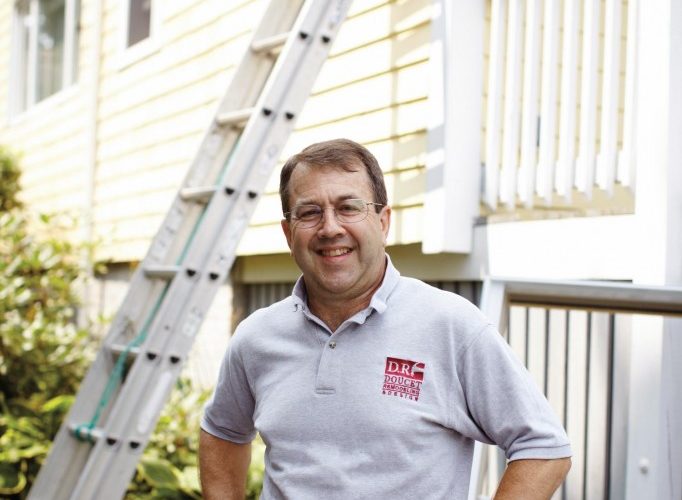Take advantage of this transitional time of year by prepping your home for winter weather. By Kiley Jacques
In a few short weeks, temperatures on the North Shore will start to plummet, which means it will also soon be time to climb into the attic and pull out your cold-abating apparel. While up there, take a look at your home’s insulation; it just may be time to add another layer of its own. In fact, it may be time to do a lot of things. One thing is certain: As the thermometer readings drop, efforts to winterize should double.
The North Shore is known for its wonderful old historic homes, but along with all of their charm come issues of upkeep. However, according to Stephen Doucet, owner of Doucet Remodeling & Design, Inc. in Stoneham, there are many ways to take action when preparing a property for our harshest season. In addition to inspecting attic insulation, he advises, check all heat and hot water pipes to determine if supplementary insulation is warranted, or if an upgrade of materials is needed.
Investigating cracks and openings around doors and windows is another good idea; if they don’t close with a tight seal, consider installing storm windows (particularly in older homes). Also assess “penetration areas”-places in need of caulking and weather stripping, such as wires, pipes, and exhaust vents.
A seemingly obvious, but often overlooked principal inspection should be that of the heating system itself. Filters need regular replacement, and general maintenance should be part of the annual winterization regime. Consider, too, the water heater reading; Doucet recommends keeping the temperature at 120 degrees, which, he says, is sufficient. Of course, opting for gas over oil is always prescribed, as it burns cleaner, which ultimately means fewer problems and associated costs with equipment.
Chimneys and hearthstones require special attention and should not be neglected for reasons beyond being potential fire hazards. Regular examination of fireplace dampers and subsequent weather stripping of the air seals mean fewer drafts and less heat (and money) lost.
There are many small steps that can be taken to assure a home’s winter protection, but no matter a homeowner’s gumption for projects, there are a few things that should be left to the experts. There are considerations outside the home, for instance, that require special licensing and code regulations; missing roof shingles and loose flashing need addressing, as both are possible entry points for drafts as well as water. Gutters and downspouts, too, ought to be cleaned and tightly fastened by a specialist to prevent seepage through the foundation.
While looking over insulated areas is a good first step, Doucet says that “professionals have specialized equipment to test the performance of the whole house.”
So, if those drafts and high bills have made an enemy of Old Man Winter, take precautions to ward off his icy touch. Be smart. Be safe. Do what’s possible and leave the rest to the pros. doucetremodeling.com. Helpful Hint: Find a professional contractor through The National Association of the Remodeling Industry (NARI).

